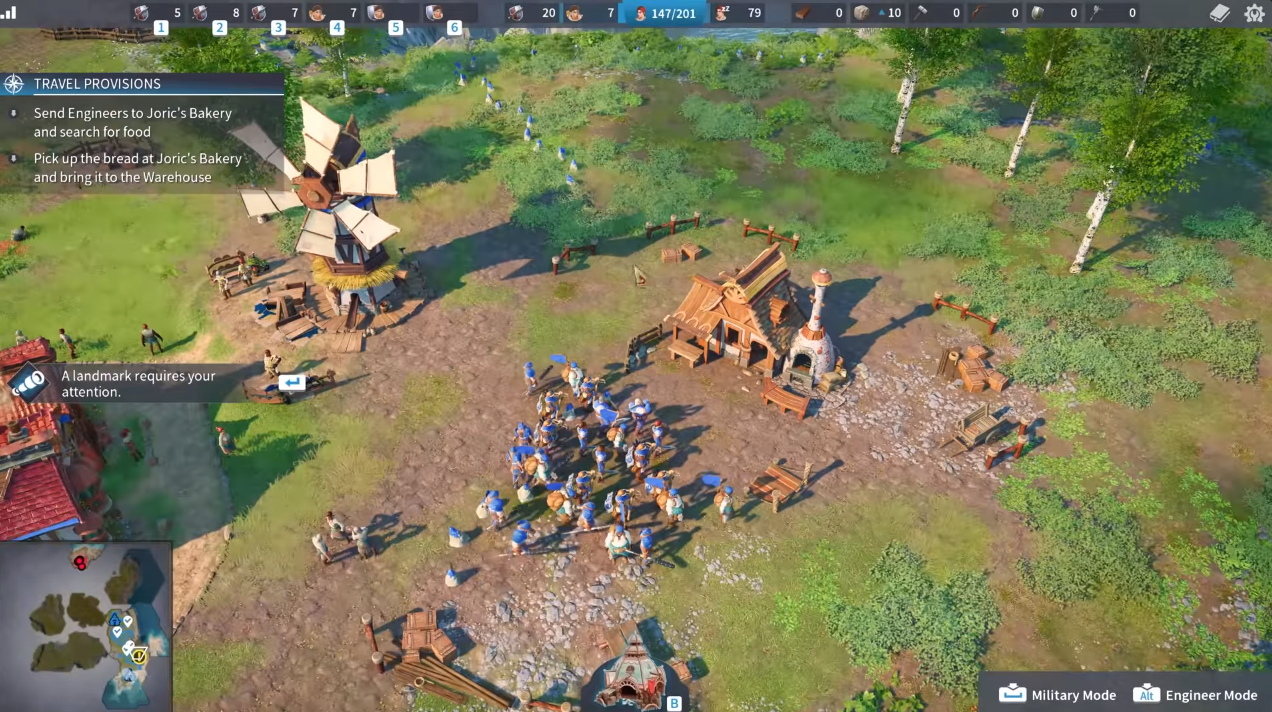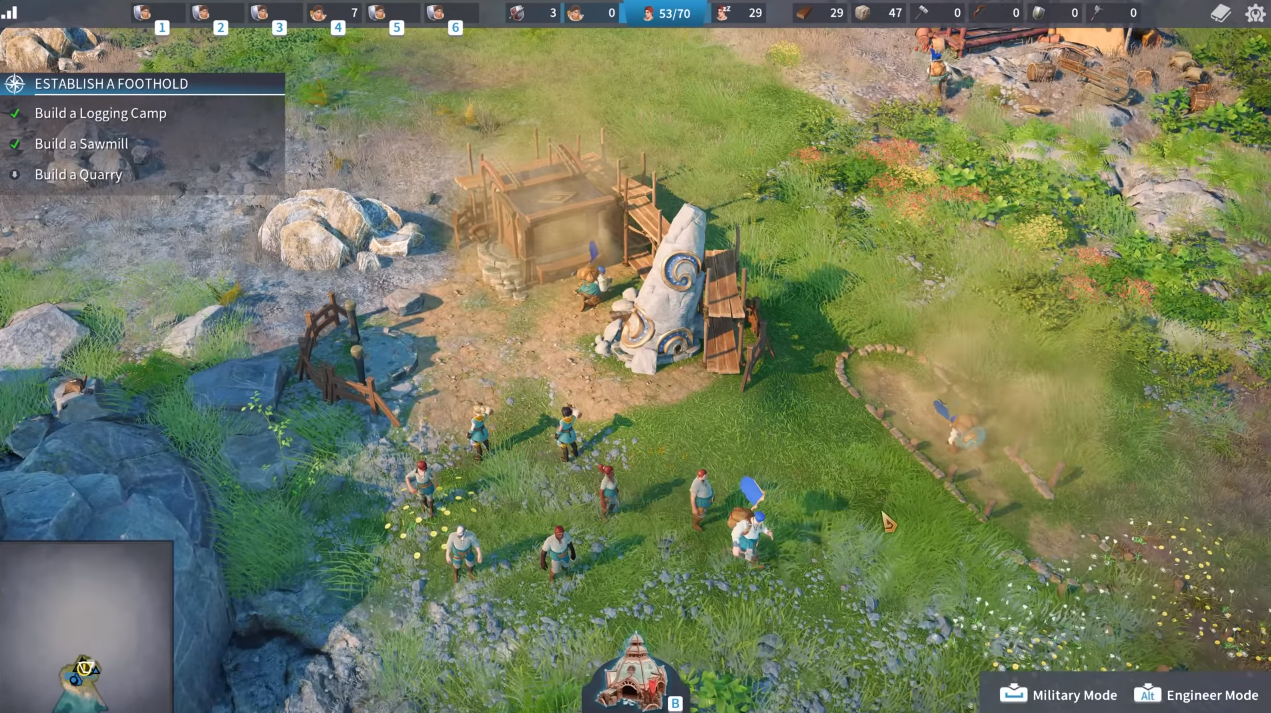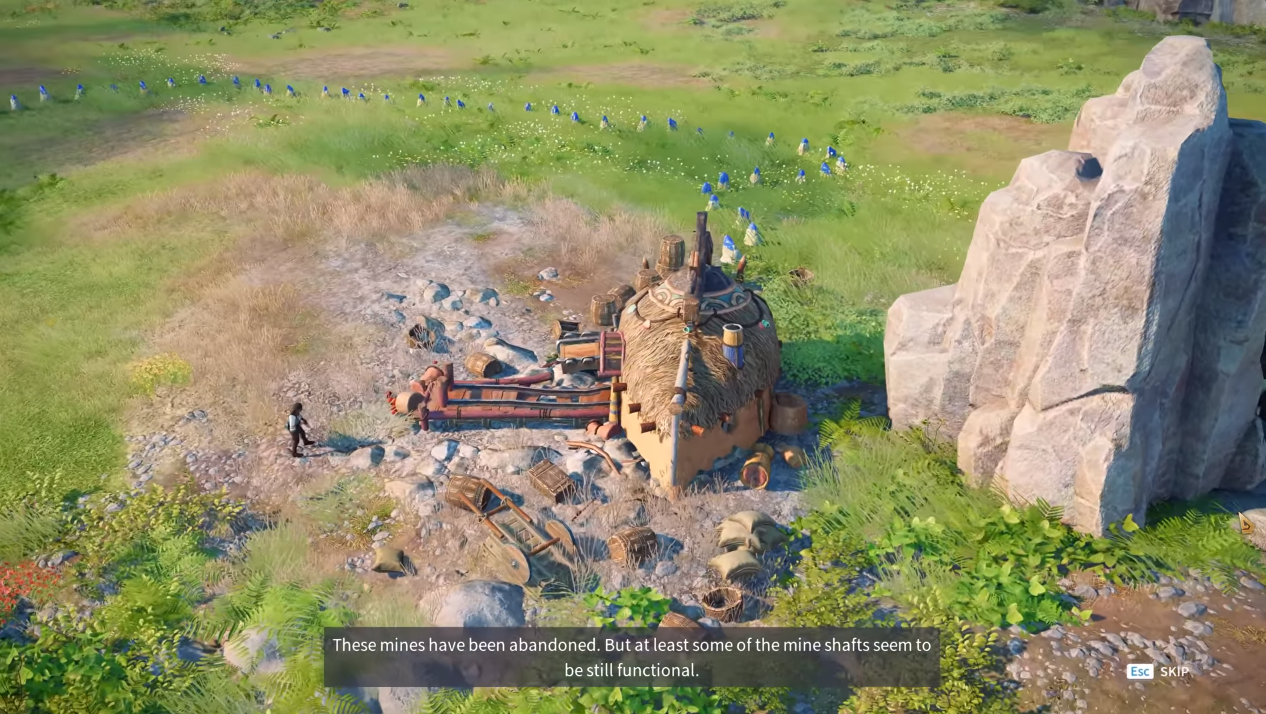Best Of
The Settlers: New Allies — 5 Best Tips for Beginners

If you’re a fan of the city-building and real-time strategy genres, you’ve likely heard about (or played) The Settlers series. It dates back to 1993, when the first game, The Settlers, was released on the Amiga. Thereafter, the MS-DOS and Microsoft Windows platforms took over. There are 13 games in the series, including the main entries and several spin-offs. The Settlers: Kingdoms of Anteria was canceled after a closed beta sowed mostly negative responses. It seemed the game was repackaged into Champions of Anteria, an unrelated action RPG to The Settlers series.
Now, Ubisoft is back at it again with a franchise reboot, The Settlers: New Allies, which, besides some lag issues, looks visually stunning and incorporates an addictive and fun gameplay loop. The Settlers: New Allies may offer a soft landing to those familiar with the series. However, some new mechanics can take a while to get used to. With The Settlers: New Allies—Best Tips for Beginners, you’ll quickly learn to build sprawling cities with strong defenses and enjoy a flourishing economy efficiently.
5. You May Have to Allocate Some Engineers Manually

In The Settlers: New Allies, you’ll soon learn that engineers are the game's backbone. They’ll do most, if not all, of the “hard work.” They’re quite a versatile bunch in that they’re the only ones who can build structures, extend the territorial boundaries of your faction by claiming land, prospect for plausible mining areas, and even steal resources to disrupt the enemy’s economy. So, if you’re running low on resources, perhaps stones to build a new structure, engineers can get them for you. Or if you’re considering building on the coast, engineers are the only ones who can secure a spot for you; hence, their crucial role in the game.
The trick is to manage your engineers effectively because they ultimately determine your success in a scenario. At the start, though, you start with a handful of engineers, whom you can choose to automate. It can work smoothly for a while, but as the plot thickens, you’ll need to carefully assess which buildings you want to give priority to, for example. Also, you don’t want a scene where you send all your engineers to the border to expand your territory while unfinished buildings remain. You’ll need to find the right balance between constructing, surveying, expanding, and stealing from the enemy through manually assigning roles to cultivate a successful economy.
4. Let Carriers Do All the Heavy Lifting for You

Carriers are people whose main goal is transporting resources from point A to point B, usually from harvesting locations like mines and logging camps to warehouses for storage and finally to construction sites. Especially at the start, resources like stone, coal, wood, and iron will come in handy to craft useful tools and weapons. While carriers also automatically go to work, depending on the available resources and needs of a building, you may want to supervise their every move instead.
If a new stone quarry needs two carriers working there, two carriers will stop carrying resources and permanently take those jobs. However, if it’s not a priority now, feel free to reassign them elsewhere. The same goes for stone roads where you notice a traffic jam building up. You can always divert the traffic to more stone roads or redirect the carriers to places where they’ll be more useful. Ensuring the carriers are always on the move is a good strategy. But also make sure that their efforts reap fruits.
3. Construct Residences in Clusters to Attract More Carriers

You can construct enough residential houses to attract as many carriers as you wish. A quick tip is to construct residences as clusters rather than stand-alone houses. This allows you to increase your maximum carrier population limit. Once the clusters are ready, carriers will spawn periodically until the global population limit is reached.
2. Stone Roads Come in Handy

Roads connect buildings to each other. It’s the only way to move resources from a warehouse to a new construction site. There are two types of roads that offer different advantages. The first are dirt roads, which don’t typically cost any material to put up. However, you may want to focus on the second type, stone or gravel roads.
Although they require stone to construct, carriers automatically use pull carts to transport resources across them once they are ready. Besides the automated feature, pull carts also ensure carriers can carry more resources per trip. In essence, a pull cart carries three times more, saving you the trouble of hiring more carriers, transporting resources faster, and freeing you from constant supervision.
1. Look for Production Sites that Have Resources in Excess and Free Up Some of it

You can store resources in warehouses that aren’t immediately needed. However, the warehouses will automatically dispatch resources to production sites in their cluster. Additionally, they request goods from other warehouses when they run out. So, generally, you won’t need to make any inputs as the resource management system is automated. However, it can cause an issue if the dispatch system doesn’t go according to your plan and strategy. At times, warehouses can dispatch resources to production sites that aren’t your current priorities. In that case, feel free to pause production at that particular building.
“Pausing” production allows you to free up additional resources, even if they have already been delivered to the site. The way it works is that unused resources become available again, allowing you to use them to construct another building or do research. Make sure to have carriers collect the available resources because if you “unpause,” the building will just reclaim them again. Pausing production comes in handy when you have more than enough tools, for example, and have no need for the workshop to make more of them. In this way, you can free up the workshop’s resources and repurpose them for other projects.







